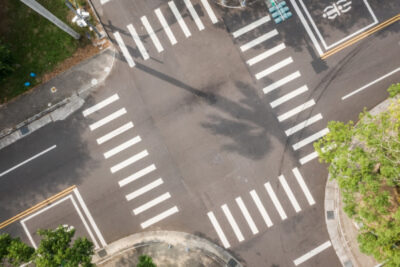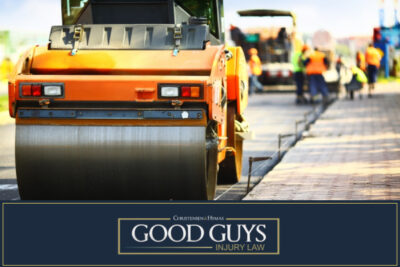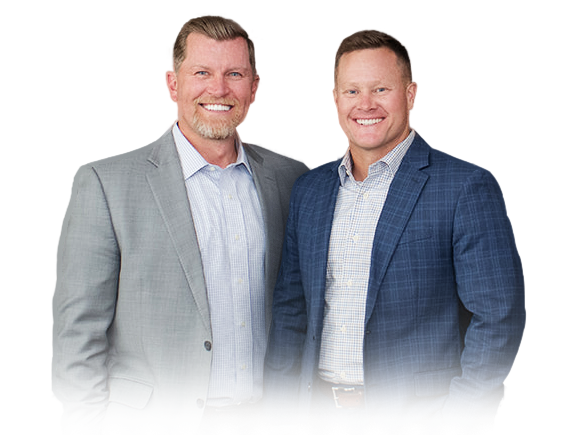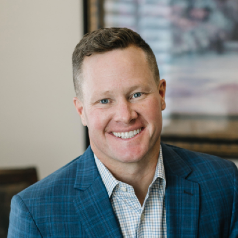 Car accidents happen every day across Utah, but certain places see more crashes than others. Whether it’s due to road design, high speeds, or poor visibility, some spots are clearly more dangerous than others. Knowing where these areas are can help drivers stay alert and avoid serious accidents.
Car accidents happen every day across Utah, but certain places see more crashes than others. Whether it’s due to road design, high speeds, or poor visibility, some spots are clearly more dangerous than others. Knowing where these areas are can help drivers stay alert and avoid serious accidents.
At Good Guys Injury Law, we’ve seen the physical, emotional, and financial effects these crashes can have.. If you’ve been hurt on one of Utah’s roads, our team is here to help. We’ve handled cases throughout Salt Lake City and beyond, helping clients recover after crashes on dangerous roads in Utah.
From filing your claim to dealing with the insurance company, we work hard to get you the care and compensation you deserve.
Table of Contents
Top Dangerous Intersections in Utah
- Redwood Road & 5400 South, Taylorsville: Known for high-speed traffic, this intersection experiences frequent rear-end collisions, especially during rush hours.
- State Street & 7200 South, Midvale: This is one of the busiest intersections in Salt Lake City. It has multiple lanes and complex traffic patterns that confuse drivers and cause crashes.
- Bangerter Highway & 4100 South, West Valley City: This intersection handles a large amount of heavy traffic daily. Frequent lane changes here make it one of the most dangerous roads for local drivers.
- North Temple & Redwood Road, Salt Lake City: This area is risky for both drivers and pedestrians due to unclear traffic signals and limited pedestrian crossings.
- Spanish Fork Main Street & US-6: A mix of local traffic and highway vehicles makes this a hot spot for accidents, particularly in construction zones.
Most Hazardous Highways in Utah
 Some highways in Utah are known for their sharp curves, narrow lanes, and high-speed crashes. These roads see more wrecks due to weather, traffic volume, and long stretches without exits or emergency help.
Some highways in Utah are known for their sharp curves, narrow lanes, and high-speed crashes. These roads see more wrecks due to weather, traffic volume, and long stretches without exits or emergency help.
Interstate 15 (I-15)
I-15 is Utah’s busiest route. It runs through major cities like Salt Lake City, Orem, and Provo. Heavy truck traffic, rush hours, and fast-moving cars increase the risk of serious accidents. Sudden stops and rear-end collisions are common, especially near exits and construction zones.
U.S. Highway 6
This route cuts through rural areas with sharp turns, limited visibility, and no median barriers. Fatal accidents occur here more frequently than on many other roads. It’s especially hazardous at night or during unpredictable weather conditions.
Interstate 70 (I-70)
Stretching across central Utah, I-70 has long empty sections with steep inclines and no nearby services. Emergency services may take longer to reach crash sites, which adds risk. Bad weather often makes the pavement slick, causing cars to skid or collide with oncoming traffic.
Interstate 80 (I-80)
I-80 connects Utah cities to neighboring states. It’s unsafe in winter due to snow, ice, and poor visibility. High-speed traffic and limited exits also make it hard for drivers to stop in time when problems arise.
Parley’s Canyon
Located along I-80, this winding canyon road is known for limited visibility, sharp curves, and steep inclines. When fog or snow rolls in, crashes happen fast. Large trucks often lose control going downhill, putting other drivers at risk.
Factors Contributing to High Accident Rates
Not all crashes are random. In Utah, certain conditions make accidents more likely to happen in the same places again and again. These factors include the way roads are built, how people drive, and what’s happening around them, like weather conditions or heavy traffic during rush hours.
Road Design and Infrastructure
Poorly planned roads lead to more accidents. Intersections with no turn lanes, faded traffic lights, and unclear signs can confuse drivers and cause mistakes. Sharp curves, narrow lanes, and sudden merges increase the risk of collisions, especially on older highways.
Some of the most dangerous roads in Utah lack proper safety features like shoulders or lighting. Improving signs, repainting lines, and adding clear pedestrian crossings can help prevent many of these crashes. Local governments and the Utah Department of Transportation are responsible for keeping road designs safe for all.
Driver Behavior
Even the safest road can become perilous when drivers make careless choices. Speeding, distracted driving, and aggressive moves like weaving or tailgating lead to more serious accidents. Many crashes involve other drivers ignoring seat belt laws or making illegal turns.
Some people text while behind the wheel, while others follow too closely during high-speed traffic. Teaching better habits and enforcing laws helps make roads safer. Education and law enforcement both play a role in reducing risky actions behind the wheel.
Environmental Conditions
Utah’s weather changes fast. Poor visibility, rain, snow, and ice all affect how cars move and stop. Many crashes happen when people don’t adjust to weather conditions, like slowing down during a storm or leaving space in fog.
Some areas, like Parley’s Canyon, become especially risky during winter storms. Water buildup, slick roads, and wind in construction zones make things worse. Drivers need to be cautious, and road crews must respond quickly to clear hazards and improve safety during tough conditions.
High Traffic Volumes
More cars mean more chances for crashes. In areas with heavy traffic, like Salt Lake City, stop-and-go driving is common, and so are rear-end collisions. Crashes are more likely near shopping centers, schools, and major cities during peak hours. Frequent lane changes in busy areas increase the risk of side swipes and missed signals.
High volumes also slow response times when crashes happen, leading to longer backups and more danger. Managing traffic flow with better lights, signage, and lane markings can help reduce risks on busy roads.
Safety Measures and Recommendations
 While accidents can’t always be prevented, many crashes on Utah’s dangerous roads could be avoided with the right changes. Improving road design, enforcing laws, and educating the public are key ways to make our roads safer for drivers, passengers, and pedestrians across Utah’s cities and highways.
While accidents can’t always be prevented, many crashes on Utah’s dangerous roads could be avoided with the right changes. Improving road design, enforcing laws, and educating the public are key ways to make our roads safer for drivers, passengers, and pedestrians across Utah’s cities and highways.
Infrastructure Improvements
One of the most effective ways to reduce accidents on dangerous Utah roads is to make physical improvements to the roads themselves. This includes adding better lighting, installing clearer traffic signals, widening narrow lanes, and repainting faded lines. In high-risk areas, features such as rumble strips or raised medians can alert drivers and reduce head-on crashes.
Busy intersections may benefit from longer turn lanes or improved pedestrian crossings, especially in areas where heavy vehicular and pedestrian traffic intersect. The Utah Department of Transportation plays a major role in funding and planning these updates, which help lower crash rates when done properly.
Enforcement of Traffic Laws
Strict law enforcement is necessary to keep high-speed traffic under control and stop risky behaviors before they lead to crashes. This means cracking down on drivers who run red lights, speed in construction zones, or use their phones while driving.
More patrols from the Utah Highway Patrol, especially in known trouble spots, can help reduce the number of serious accidents. Using cameras at intersections or electronic signs that show speed can also remind motorists to slow down. When people know the law is being enforced, they are more likely to follow it.
Public Awareness Campaigns
Education is another powerful tool that helps prevent accidents by changing how people think and act behind the wheel. Public campaigns that promote driving safely, wearing a seat belt, and avoiding distractions can reach a wide audience through TV, radio, and social media. These efforts are especially important for young or new drivers, who may not realize how risky certain habits can be.
Simple messages like “Slow Down in the Snow” or “Don’t Drive Drowsy” help people remember how their actions impact everyone on the road. The more people understand the risks of dangerous roads, the more likely they are to drive with care.
Legal Options for Accident Victims
If you’ve been injured in a crash on one of Utah’s most dangerous roads, you may have the right to take legal action. Understanding who was at fault, what kind of claim to file, and when to get a lawyer can make a big difference in the outcome of your case.
Understanding Liability
Before you can recover damages, it must be clear who caused the accident. That might be another driver, a city agency responsible for unsafe roads, or even a construction company that failed to post signs. Your attorney will gather evidence from the accident scene, police reports, medical records, and witnesses to determine who is legally at fault.
In Utah, liability can be shared, so if you were partially responsible, it may reduce your compensation but not eliminate it entirely. Understanding this process is key to starting a strong case.
Seeking Compensation
When someone else’s actions cause a crash, you may be able to seek compensation for all the ways the crash affected your life. This could include medical expenses, car repairs, lost wages, pain and suffering, and more.
If your injuries are long-lasting or you’ve had to miss work, your claim might be worth more than you expect. A personal injury lawsuit can also cover long-term needs like physical therapy or home care. The sooner you file, the easier it is to document what happened and protect your rights.
Importance of Legal Representation
Dealing with the insurance company can be overwhelming, especially when you’re also healing from your injuries. Personal injury lawyers take over the legal work so you can focus on recovery. They’ll talk to the insurance adjuster, fill out paperwork, and make sure deadlines are met.
Utah car accident lawyers also understand what constitutes a fair settlement and won’t settle for less than you deserve. Having legal support means you don’t have to worry about missing out on money you’re owed or being pushed into a fast settlement that doesn’t cover the full impact of the crash.
FAQs
1. Is Green River One of the Most Dangerous Places to Drive in Utah?
Yes. The Green River area, especially along U.S. 6, is known for being a perilous route due to long stretches without services, sharp turns, and limited lighting.
2. What Legal Process Should I Follow After a Crash on a Dangerous Highway?
Start by collecting contact and insurance information, seeking medical care, and then speaking with a lawyer. They’ll guide you through the legal process to help protect your rights.
3. Will Personal Injury Protection (PIP) Cover All My Costs?
Personal injury protection in Utah may help with basic medical costs and lost income, but it often isn’t enough to cover serious or long-term damages without further claims.
4. What Makes East-West Highways in Utah More Dangerous?
Highways running east-west, like I-70 and I-80, often include twisting routes, steep drops, and significant risks from weather and commercial trucks, especially when drivers ignore the speed limit.
5. How Can I Make Sure I Receive Fair Compensation After an Accident?
To get a fair settlement, keep records of all medical bills and damages, take photos of visible injuries, and work with a lawyer who knows how to fight for fair compensation on dangerous highways or in areas of heavy congestion.
Contact Our Utah Car Accident Lawyer for a Free Case Consultation
 If you or a loved one has been injured on one of Utah’s dangerous highways or intersections, you don’t have to face the aftermath alone. At Good Guys Injury Law, we’ve helped countless people get back on their feet after serious crashes. Whether you were hurt on a twisting route, in heavy congestion, or hit by a commercial truck, we’re here to help guide you through the legal process with clarity and care.
If you or a loved one has been injured on one of Utah’s dangerous highways or intersections, you don’t have to face the aftermath alone. At Good Guys Injury Law, we’ve helped countless people get back on their feet after serious crashes. Whether you were hurt on a twisting route, in heavy congestion, or hit by a commercial truck, we’re here to help guide you through the legal process with clarity and care.
We’ll collect the right contact and insurance information, work with your doctors to track medical costs, and push for fair compensation from the insurance company. If needed, we’ll fight in court for the fair settlement you truly deserve. Don’t wait to protect your health and your rights.
Call our office today to schedule your free case consultation. Let us help you move forward, one step at a time.






